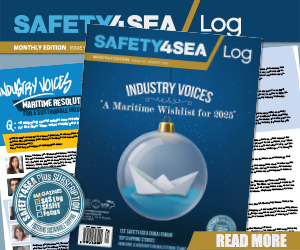Loss Prevention bulletin by The West of England P&I Club
The West of England P&I Club issued a Loss Prevention Bulletin whichincludes guidance for ships crews on the loading and carriage of reefer containers to help reduce the possibility of claims arising, along with information on the types of cargoes carried, how reefer containers work, pre-trip inspections, container stuffing and sealing, and temperature recording.
The common goal of these guidelines is the prevention of claims, and to ensure that the cargo is carried in a safe and efficient manner without loss of product quality. To achieve this aim it is vital that all concerned appreciate the importance of ensuring that the prescribed temperature set point is maintained throughout the voyage. It should also be understood that reefer containers are not designed to lower the temperature of warm cargo other than extremely slowly.
The Club advises operators with vessels which may carry reefer containers to consider trecommendations included in this LP Bulletin( see below) and note the additional advice concerning the operation, stowage and transportation of such equipment.
| Loading and Carriage Guidelines |
- Vessels should always carry manufacturers kits of reefer spares, suitable tools and repair manuals specifically relating to the makes and models of the refrigeration units carried. These should be used by the vessels reefer engineer if it becomes necessary to effect emergency repairs during the voyage. There are several different types of reefer unit in general use, each having individual repair and maintenance characteristics
- The provision of a safely rigged working platform is essential when repairing a container stowed more than one tier high on deck.
- A supply of refrigerant gas should be carried in accordance with the type and number of refrigerated containers on board.
- Prior to shipment it is essential that written confirmation is obtained from the shippers detailing all conditions of carriage including temperature, ventilation and humidity requirements. International Cold Chain Technology (ICCT) recommendations regarding the specification of carriage conditions are available on the ICCT website.
- If a container is to be stuffed at the load port terminal, a surveyor should be appointed to monitor the arrival temperature of the cargo and to note details of any departure from specification.
- Any particular requirements in the charter party addressing the carriage of reefer containers, for example, monitoring routines, repairs to be attempted, parties to be notified in the event of a malfunction etc., should be complied with, and appropriate instructions provided to the vessel in writing.
- A reefer operations manual should be available on board specifying the carriage conditions for a range of commodities shipped in refrigerated containers, possible problems and a summary of trouble shooting procedures. Should a situation arise which is not addressed in the manual, advice from a specialist should be obtained.
- Before loading commences, the crew should reconfirm that the vessel’s power sockets are compatible with the reefer plugs and are sufficient in number for all reefer containers to be carried. If necessary, a suitable quantity of plug adaptors should be obtained.
- Spare reefer extension leads should be carried as a precaution against the failure of individual power sockets.
- Once a reefer container has been plugged in, the locking collar should be placed over the plug and socket. Checks should also be made to ensure that the reefer socket box is completely closed to prevent water ingress during the voyage.
- After a reefer container has been loaded, plugged in and the power has been switched on, a suitably experienced crewmember should confirm that the unit is running and that the temperature is proceeding towards the set point. If a container will not run, some basic checks should be carried out. For example, the power switches on the control panel or the main breakers inside the control panel may have been switched off. If the container still refuses to start after it has been checked by the vessel’s reefer engineer, shore assistance should be obtained. If this is also unsuccessful, the container should be sent back to the terminal
- Many reefer container cargo claims have arisen due to confusion between the Fahrenheit and Celsius temperature scales, and also between positive (+) and negative (-) temperatures. Great care should be exercised to ensure that the set point temperature has been adjusted correctly as soon as the container has been placed on board. Any discrepancy between the actual temperature settings and cargo carriage instructions should be reported immediately.
- At sea, reefer containers should be inspected at intervals not exceeding six hours. The time of such inspections together with the delivery and return air temperatures should be recorded on each occasion. Details of any problems should be documented in an appropriate logbook. Alternatively, automatic logging systems may transmit signals via power cables to a central point. Such systems should be checked for error messages on a regular basis.
|
A reefer container is designed to maintain the pulp temperature of the cargo as at the time of stuffing. Although the container machinery may, over a period of time, reduce the temperature of warm cargo delivered above its prescribed temperature, this is not the primary function of a reefer container.
If the pulp temperature of the cargo exceeds the set point temperature specified by the shippers, the warm goods will cause the temperature of the delivery air to rise very rapidly when passing up and through the cargo. The return air may eventually reach a temperature level whereby the refrigeration machinery cannot cool it down sufficiently prior to re-circulating it as delivery air. In such an event, the control panel may show a delivery temperature higher than that of the temperature control setting. The delivery/return air differential will in most cases narrow as the continuous circulation of air, being cooler than the cargo, brings the cargo temperature down towards the desired level. Any rise in return air temperature will be halted as the refrigeration unit begins to run in standard operational mode.
For more information on the carriage of reefer containers, please read West of England’s Club Loss Prevention Bulletin:

Source:West of England P&I Club
































































During loading of a minus 18C reefer container, the container has to be precooked then switched off. Within 2 hours loading, what would be the difference in temperature, I.e. temp increase? Thank you . please email reply